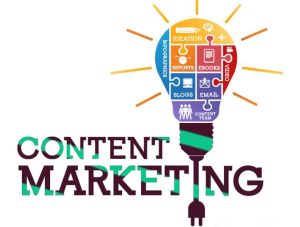Effective web design. 6 basic rules based on statistics
Website design serves not only to create an attractive web resource but also to embody the brand’s personality. But it is an effective sales and marketing tool. Conversion, the number of leads, target audience loyalty, and the ability to attract new customers largely depend on its features: color palette, ease of navigation, arrangement of elements, fonts, graphics, and other things.
Like the phrase “beauty is in the eye of the beholder,” site users, not site owners, judge effective web design. Many factors affect the usability of a website, and it’s not just about form (how good it looks) but also functionality (how easy it is to use). Usability and practicality largely determine the success of any website, for example, sites of best online casinos.
Basic principles of effective web design
Websites that could be better designed tend to perform poorly and have suboptimal Google Analytics metrics (such as high bounce rates, low time on site, low pages per visit, and low conversions). So, what makes web design effective? Let’s look at the statistics to understand what will make your website aesthetically pleasing, easy to use, attractive, personalized, and effective.
1: Purpose and need satisfaction.
Good web design always satisfies the user’s needs. Are your web visitors looking for information, entertainment, interaction, or transaction with your business? Each page on your site should have a clear purpose and most effectively satisfy a specific need of your site’s users – this is considered an essential indicator of the reliability of the business.
2. Content organization
People online are eager to get information quickly, so it’s essential to communicate clearly and make your information easy to read and digest. Some effective tactics to include in your web design include organizing information using headings and subheadings and using bulleted lists instead of long, complex sentences.
3. Fonts (typography)
Comfortable, highly readable fonts such as Sans Serif, Arial, and Verdana are easier to read online (Sans Serif fonts are modern without decoration). The ideal font size for easy reading on the Internet is 16 pixels. The maximum number of fonts used on a web page is no more than 3 so that your design is as orderly and harmonious as possible.
4. Color palette
A well-thought-out color palette can significantly improve the user experience. Complementary colors create balance and harmony. Using contrasting colors for text and background will make it easier to read by eye. Bright colors create emotion and should be used sparingly (for example, for buttons and calls to action). Last but not least, white space effectively gives your website a modern and uncluttered look.
5. Images (photos, infographics)
A single image can speak a thousand words, and choosing the right images for your website can help position your brand and connect with your target audience. If you need quality professional photos on hand, consider purchasing stock photos to improve the look of your website.
Also, consider using infographics, videos, and graphics, as they can be much more effective in communicating than even the most well-written text.
6. “F” design pattern
Eye tracking studies have shown that people scan computer screens in an “F” pattern. Most of what people see is at the top and left of the screen, with the right side of the screen barely visible. Instead of enhancing the viewer’s visual flow, effectively designed websites will work with the reader’s natural behavior and display information in order of importance (left to right and top to bottom).
When scanning information on a web page, our mind and subconscious intuitively search for the most important and necessary information. Once the reader has the bulk of the information, he quickly scans the page, stopping if something catches his eye. But, most likely, this page will be abandoned.
You can also look at successful web design examples online and get some ideas. Remember that you can use other people’s ideas only with the permission of the content author.



